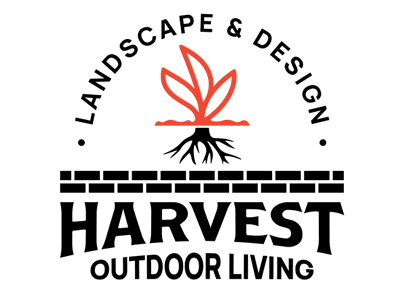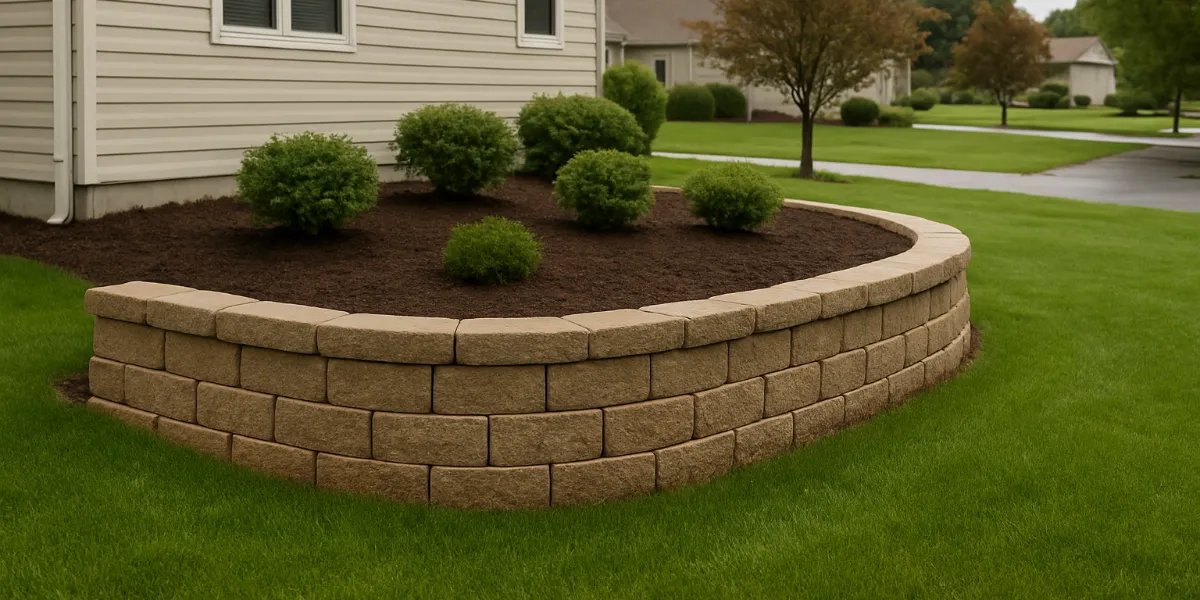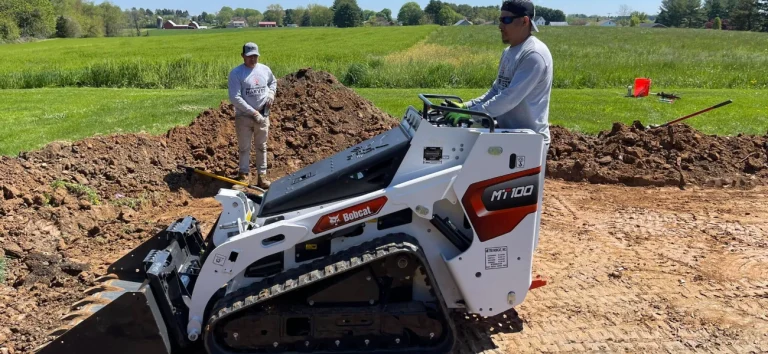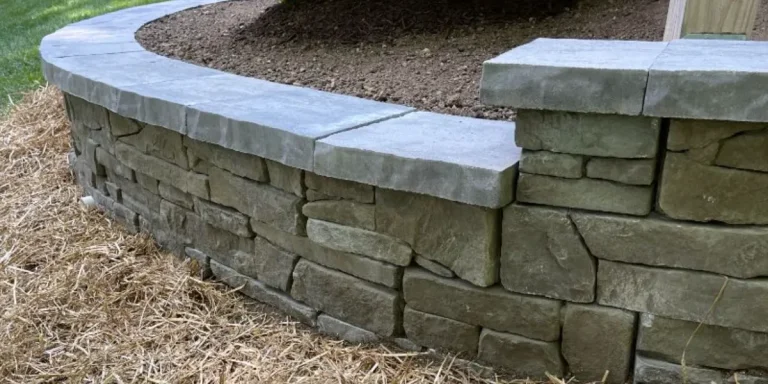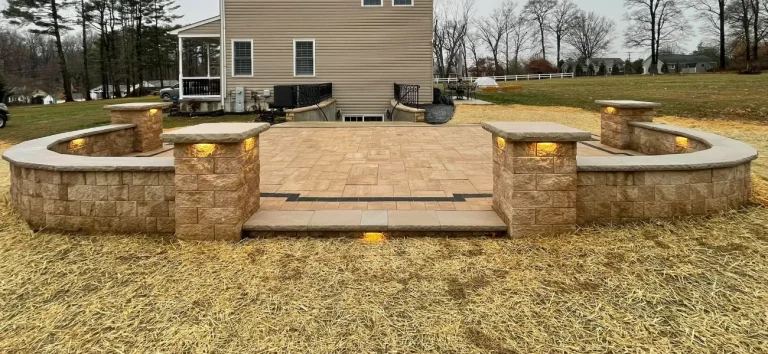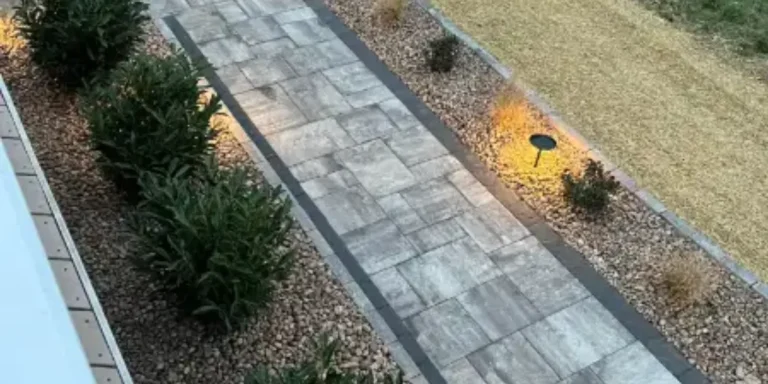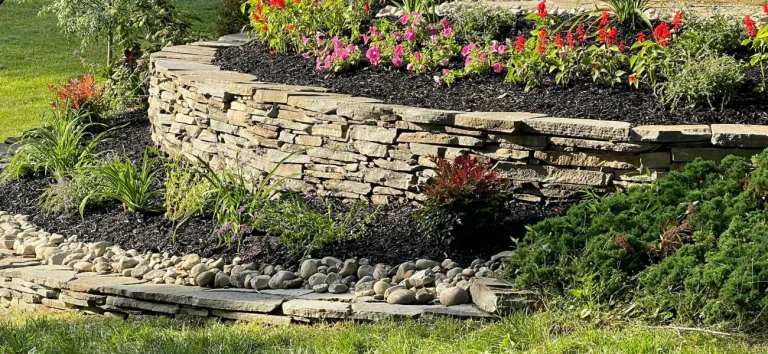Signs Your Retaining Wall Needs to Be Rebuilt
Retaining walls are a key part of your landscape’s structure. They hold back soil, prevent erosion, manage water runoff, and add visual appeal to your property. But when a retaining wall starts to fail, it’s more than just an eyesore—it can cause drainage problems, property damage, and even safety hazards.
At Harvest Outdoor Living, we help homeowners throughout Bel Air and surrounding areas identify when a wall needs more than a patch—and provide long-lasting solutions that protect your landscape.
Visible structural issues
The most obvious and urgent signs that your retaining wall may need to be rebuilt are visible changes to its shape, surface, or alignment. Over time, even the best-constructed walls can deteriorate due to a combination of soil pressure, water infiltration, freeze-thaw cycles, and poor installation. Left unaddressed, these problems not only affect your landscape’s appearance—they can compromise safety, cause drainage problems, and even damage nearby structures.
Cracks and separation
-
- Widening cracks—particularly near joints, corners, or between wall segments—are usually a sign of internal stress. This may be due to shifting soil, poor base preparation, or water buildup behind the wall.
- Horizontal cracks running along the length of the wall often indicate that the structure is bowing or bending under pressure, a serious red flag.
- Vertical cracks may be caused by uneven settling or differential movement in the foundation.
- Separation between blocks or wall segments is a common issue in older or improperly built walls. This creates structural weakness and allows water to seep through, accelerating further damage.
- Gaps forming between the wall and surrounding hardscapes, like patios, driveways, or walkways, suggest the wall is moving and losing its grip on the surrounding soil.
If you're noticing cracks that are getting larger over time or reappearing after being filled, it's time to consult with a professional. At Harvest Outdoor Living, we assess not only the visible damage but also the forces behind it.
Bowing or bulging
-
- Outward bowing happens when hydrostatic pressure (water pressure behind the wall) exceeds what the wall was designed to hold. This is a common failure point for walls without proper drainage systems, like weep holes or gravel backfill.
- Bulging sections are often accompanied by loose blocks, tilting capstones, or uneven surfaces. These can look subtle at first but worsen rapidly with each storm or seasonal freeze-thaw cycle.
- This condition signals that the structural integrity of the wall has been compromised and it may be in danger of collapse.
We often see this issue in older retaining walls or those built without geogrid reinforcement. Harvest Outdoor Living specializes in building walls with proper support and drainage to prevent these failures from reoccurring.
Leaning
-
- A retaining wall that is tilting forward or backward is a serious concern. This often results from an improperly compacted base, poor footing, or oversaturation of the soil behind the wall.
- Leaning is rarely a cosmetic issue. It’s often a sign that the foundation has shifted or settled unevenly, meaning the wall is no longer performing its intended function.
- Even a few degrees of tilt can place enormous strain on the wall, turning it into a hazard for anyone nearby. Walls that lean noticeably should be rebuilt—reinforcement or patching is not a safe or lasting fix.
If your retaining wall is showing any combination of these structural problems, it’s not just an aesthetic issue—it’s a failure in your property’s infrastructure. Harvest Outdoor Living provides full-service retaining wall assessments, removals, and rebuilds using high-quality materials and engineering best practices to ensure long-term performance and peace of mind.
Water-related damage
Water is one of the most destructive forces a retaining wall can face. While the wall's primary purpose is to hold back soil, it also needs to safely manage the flow and pressure of water. Without an integrated drainage system, water can accumulate behind the wall, exerting constant pressure and weakening its structure over time. Even well-built walls can fail prematurely if water management is overlooked.
Poor drainage symptoms
Watch for the following signs that indicate water is causing problems behind or around your retaining wall:
-
- Standing water or soggy soil near the base – This typically means water isn’t being redirected properly. Persistent moisture at the foot of the wall can undermine its foundation and cause soil movement.
- Clogged or missing weep holes or drainage pipes – These critical components allow water to escape from behind the wall. When they’re blocked or absent, pressure builds up quickly.
- Erosion patterns, washout, or bare spots – These signs often appear above or below the wall and signal that stormwater is flowing uncontrolled, removing soil and compromising plantings or adjacent hardscapes.
- Discoloration, staining, or moss on the wall’s surface – Water that isn’t draining correctly may seep through the wall, leaving mineral deposits or promoting moss growth. Over time, this can break down materials and accelerate decay.
Why drainage is essential in retaining wall construction
When drainage is poorly designed—or missing entirely—it’s not a matter of if the wall will fail, but when. Water weighs over 60 pounds per cubic foot. Without proper relief, the force adds up quickly behind even a modest-sized wall, pushing outward and weakening its structure.
Unfortunately, many older retaining walls were built without key drainage components such as:
-
- Gravel backfill to allow for proper percolation
- Drainage pipes or French drains to carry water away from behind the wall
- Weep holes to provide direct outlets for excess water to escape
At Harvest Outdoor Living, we don’t just rebuild walls—we rebuild them the right way. Our retaining wall replacements always include proper drainage strategies based on the unique layout of your property. Whether it’s installing a perforated drain pipe, adding a gravel backfill zone, or reworking nearby grading, we ensure that water flows safely and never becomes a threat to your investment.
Shifting or failing materials
Retaining walls should be tightly constructed with secure footing. When the materials themselves start to move or degrade, it’s time for a replacement.
Signs of material failure
-
- Loose or shifting blocks, timbers, or stones
- Rotting wood (in timber walls) or crumbling mortar (in block or stone walls)
- Sinkholes, depressions, or soil loss around the wall
If your wall is falling apart at the material level, patching or reinforcing it won’t fix the underlying issues. We’ll assess your existing structure and design a new wall that’s built to last.
Why rebuilding is often better than repair
While it might be tempting to patch a failing retaining wall, repairs often don’t address the root causes. In many cases, the original wall wasn’t built with long-term performance in mind. Common issues like improper grading, insufficient base depth, lack of drainage, or poor-quality materials can’t be fixed with a surface-level solution. That’s why rebuilding—not repairing—is often the most cost-effective and lasting option.
Why spot repairs fall short
-
- Underlying issues remain – Even if you fix a crack or reset a leaning section, water pressure and soil movement will continue to act on the wall if drainage and structural integrity aren't addressed.
- Patching doesn’t guarantee longevity – Temporary fixes might buy time, but they rarely hold up over multiple seasons of freeze-thaw cycles, rain, and shifting soil.
- Aesthetic mismatches – Repairing only part of a wall often results in visible inconsistencies in color, alignment, or texture—especially if the original materials are no longer available.
Benefits of a full retaining wall rebuild
At Harvest Outdoor Living, we don’t just remove and replace—we redesign and rebuild for long-term performance, safety, and beauty. Our engineered retaining walls are built to withstand the forces of nature and elevate your landscape’s appearance.
When we rebuild, we ensure:
-
- Proper base depth and compaction
Every wall starts with a solid foundation. We excavate to the correct depth, compact the base material thoroughly, and follow manufacturer and industry standards for wall height and load requirements. - Durable, weather-resistant materials
We use high-quality stone, concrete block, or modular wall systems designed for Maryland’s climate—materials that resist erosion, cracking, and UV damage. - Integrated drainage systems
French drains, gravel backfill, and weep holes are always included to manage water behind the wall and prevent hydrostatic pressure from building up. - Grading and slope adjustments
We reshape the surrounding landscape as needed to direct surface water away from the wall, reducing the chances of erosion or pooling. - Attractive, property-matched design
Your new wall won’t just work better—it’ll look better too. Whether you want a natural stone aesthetic, modern block design, or tiered layout, we’ll match your vision and the character of your home.
- Proper base depth and compaction
By rebuilding from the ground up, Harvest Outdoor Living ensures your retaining wall becomes a long-term solution—not a recurring headache. We take pride in creating structures that combine strength, functionality, and curb appeal.
Proudly serving Harford County and beyond
Harvest Outdoor Living provides expert retaining wall construction and landscaping services in:
-
- Bel Air
- Abingdon
- Aberdeen
- Churchville
- Fallston
- Forest Hill
- Havre De Grace
- Jarrettsville
- Perry Hall
- White Marsh
- And other surrounding Harford County areas
Let's rebuild your retaining wall the right way
Don’t wait until your wall collapses—call us now for an expert evaluation.
If you’re seeing signs that your retaining wall is failing, contact Harvest Outdoor Living today. We’ll assess the situation and recommend a safe, long-lasting solution tailored to your property’s needs.
We proudly serve Bel Air and the surrounding Harford County communities with professional-grade landscaping and drainage services you can trust. Let us help you protect your landscape and increase your property’s value.
